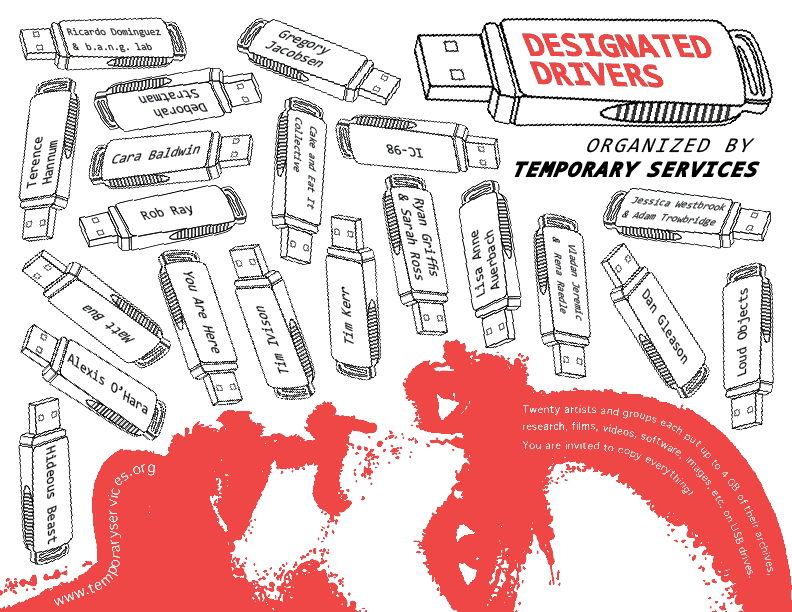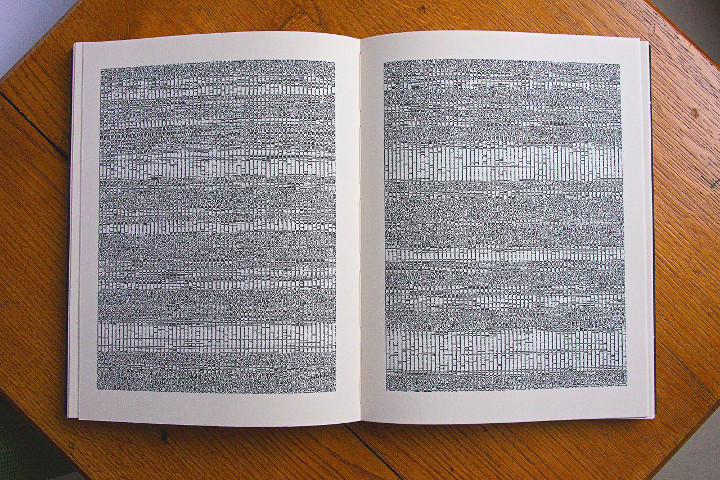Frohne, Schieren, Guiton (eds.): Present Continuous Past(s): Media Art. Strategies of Presentation, Mediation and Dissemination (2005)
Filed under book | Tags: · archive, archiving, art history, conservation, database, media art, preservation, storage, video art

“With a history of more than 30 years, media art plays an increasingly important role in the international discourse on contemporary art. The reception of canonical video works and electronic media installations is however restricted to temporary and locally defined displays in museum exhibitions or confined to incomplete catalogue documentations. This volume provides a unique combination of theoretical reflections on the reproducibility, preservation of authenticity and juridical implications of emulation techniques with practical approaches to archiving methods and commercial aspects of media art’s accessibility. It is an indispensible guide to the pro’s and con’s for new forms of de-centralized systems of mediation and the growing demands for liberal rules and easy access to online-presentations of media art. Uncomparable to other current publications, the book offers a practical manual with checklists for relevant websites and content profiles of major distribution companies.”
With contributions by Ursula Frohne, Ulrike Rosenbach, Sabine Flach, Elke Bippus and Dirck Möllmann, Mona Schieren, Lydia Haustein, Dieter Daniels, Katharina Ammann, Hans D. Christ and Stan Douglas, Dennis Del Favero / Neil Brown / Jeffrey Shaw / Peter Weibel, Jean-François Guiton, Rudolf Frieling, Monika Fleischmann / Wolfgang Strauss, Rens Frommé / Sandra Fauconnier, Lori Zippay, Bart Rutten.
Edited by Ursula Frohne, Mona Schieren, Jean-Francois Guiton
Publisher Springer, Vienna, 2005
Schriftenreihe der Hochschule für Künste Bremen series, 2
ISBN 3211254684, 9783211254684
223 pages
via Jo Morfin
PDF (updated on 2020-9-26)
Comments (4)Temporary Services: Designated Drivers (2011)
Filed under booklet | Tags: · archive, archiving, art, filesharing, sharing, usb

“A USB drive is a flash memory data storage device that is integrated with a Universal Serial Bus interface. With the invention of USB drives, digital information has become extremely portable and easy to transfer in large quantities from one computer to another. Students regularly bring their films and MP3 files to class on USB drives. Professors carry their lectures and presentations on USB drives and plug them into a school’s host computer. Files move back and forth whether there is internet access or not. And as we have seen in the recent revolutions in Egypt, and the Middle East, internet access is not guaranteed. Websites can be blocked or an oppressive government can get the whole thing turned off and taken away. Corporations can pressure governments to throttle the internet in unequal biased manners that are good for their businesses, but not individuals and communities. Still, files want to move between people. Back up plans are needed and sharing must continue. We are all creating massive digital surpluses and broadband is too limited for us to have greater, freer kinds of exchanges.
For Designated Drivers, we invited an international selection of twenty people and groups to each fill one four-gigabyte USB flash drive with material of their choosing. These drives will then be presented in exhibition spaces, attached to wall-mounted retractable laundry lines. Visitors will be able to load their own drives or laptops (or use a host computer and CDrs or DVDrs) with any of the material they would like from each of the flash drives.
The drives include images, films, audio, programs, and many publications worth of writing and graphic design. File types include: MP3, JPEG, PNG, AIFF, TIFF, PSD, WORD DOCs, PPT, MPEG, PDF, AVI,and more. The participants have included mountains of material – often at higher resolution than is commonly seen on a personal website, and in many cases material that is not duplicated online at all. Some participants have used this opportunity to present a few recent projects with great depth, while others have chosen to survey their entire creative output over more than a decade.
The contents of the flash drives in Designated Drivers are deliberately not available online from one centralized location. We want you to get out of your house. We want you to mingle, in person, with others and talk about which files look interesting to transfer and which might be more to someone else’s liking. We want to make file sharing a bit more physical, social and special again – the way that tape traders in the 1980s would duplicate music onto cassette for another another and mail amazing obscurities to each other all over the world. We also recall those who linked their VCRs together to share obscure films and concert footage. Technology has come a long way, and today we can make these exchanges without a quality loss with each generation that gets removed from the original. We can fit more copies into ever smaller packages. But we question our own growing dependence on the internet as a means of detached information exchange and want to try another approach.
This booklet is a guide to the first round of offerings. Each ‘Designated Driver’ has written an introduction to their device. We welcome you to copy whatever you like, and to further share it however you see fit. We encourage you to organize your own social file sharing situations to make this process more fun, more social, and a hell of a lot less controllable.” (organizers)
Publisher Temporary Services, April 2011
24 pages
La Société Anonyme: The SKOR Codex (2012)
Filed under artist publishing | Tags: · archive, archiving, art, code, data, digital heritage, media art, preservation, print, storage

The SKOR Codex is a printed book which will be sent to different locations on earth. It contains binary encoded image and sound files selected to portray the diversity of life and culture at the Foundation for Art and Public Domain (SKOR), Amsterdam, and is intended for any intelligent terrestrial life form, or for future humans, who may find it. The files are protected from bitrot, software decay and hardware failure via a transformation from magnetic transitions on a disk to ink on paper, safe for centuries. Instructions in a symbolic language explain the origin of the book and indicate how the content is to be decoded.
La Société Anonyme noted that “the package will be encountered and the book decoded only if there will be advanced civilizations on earth in the far future. But the launching of this ‘bottle’ into the cosmic ‘ocean’ says something very hopeful about art on this planet.” Thus the record is best seen as a time capsule and a statement rather than an attempt to preserve SKOR for future art historians. The SKOR Codex is a project by La Société Anonyme.
Published in July 2012
304 pages
Interview with authors (Annet Dekker, Open!, 2014).
Comment (0)
